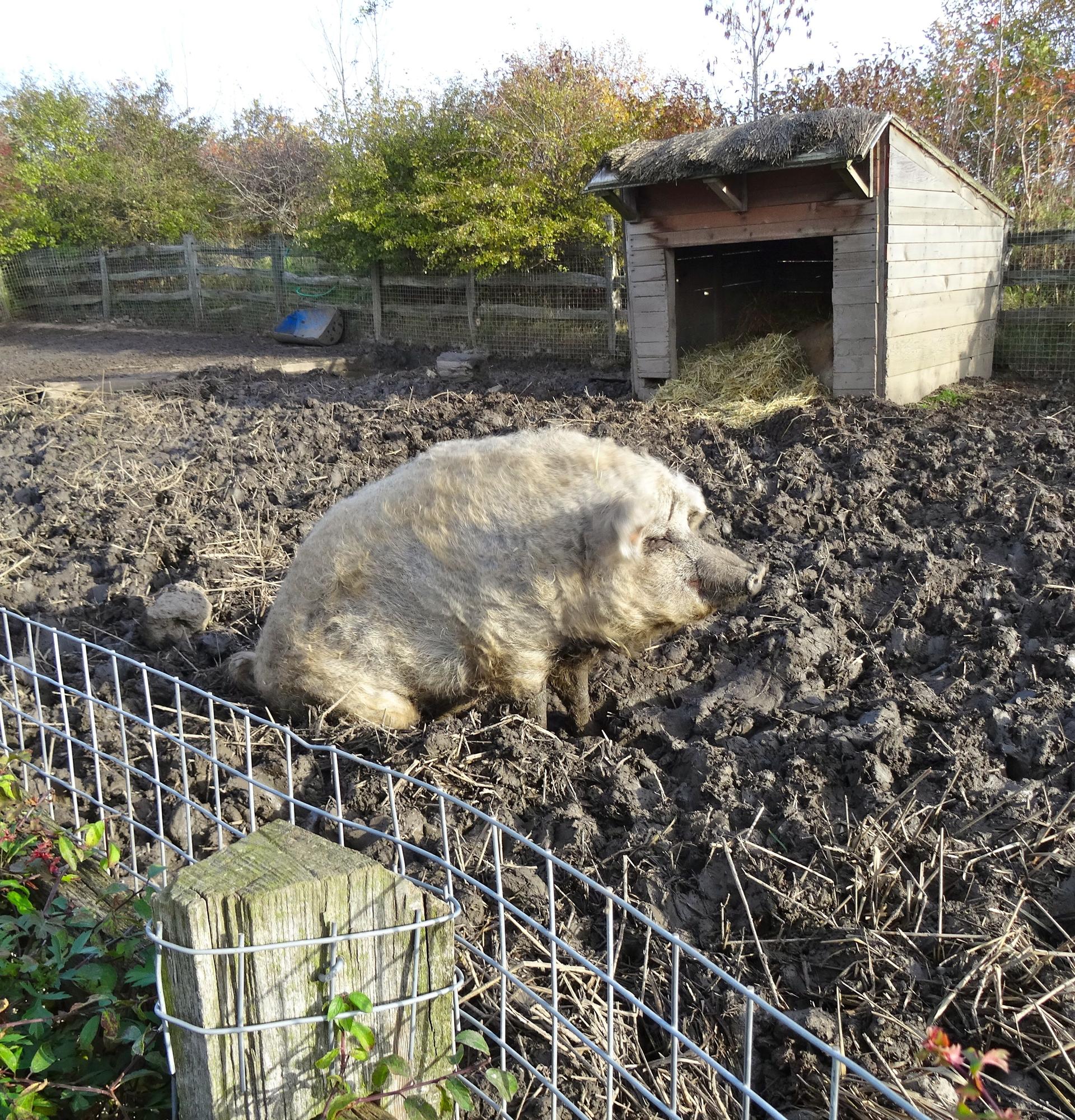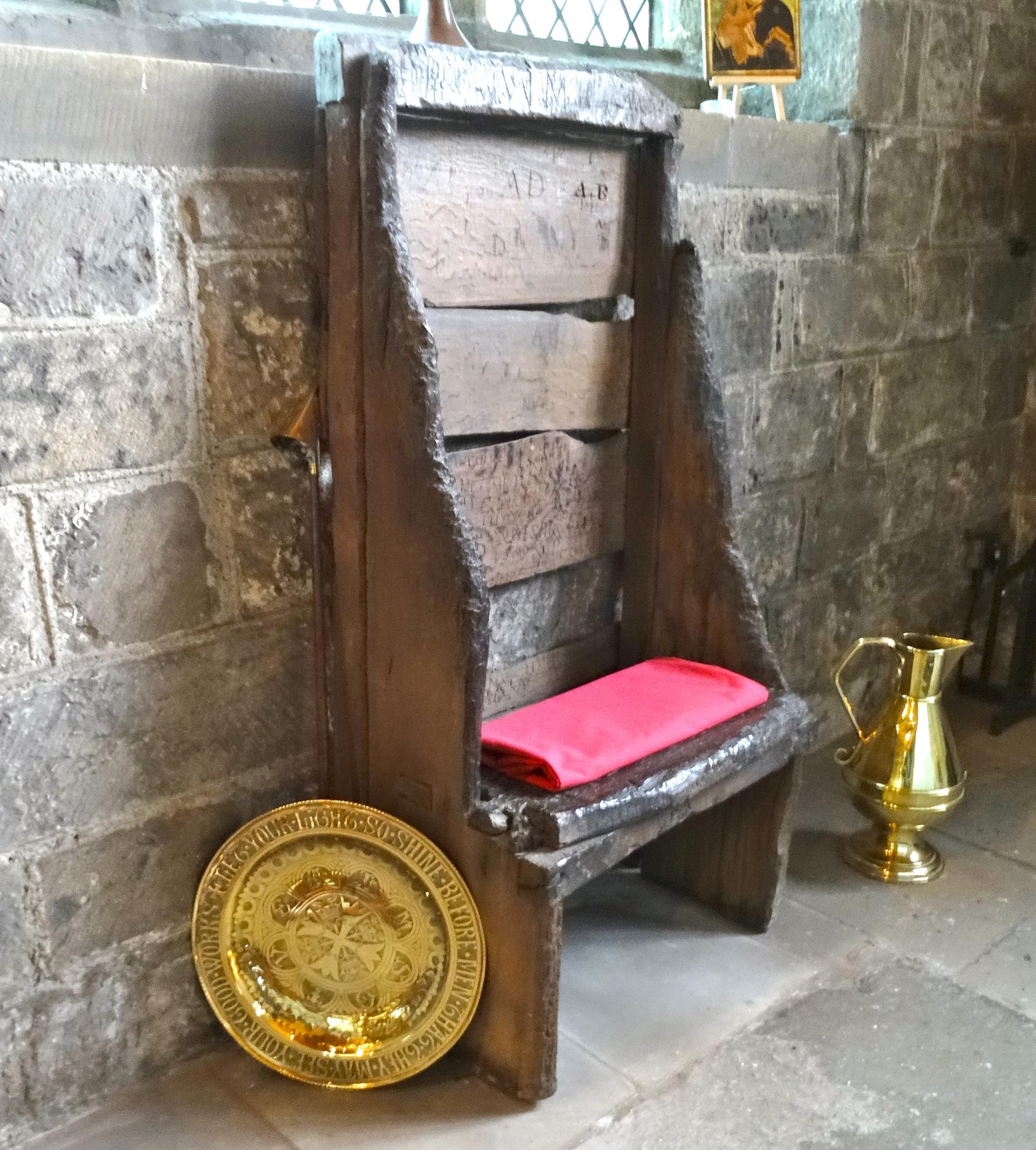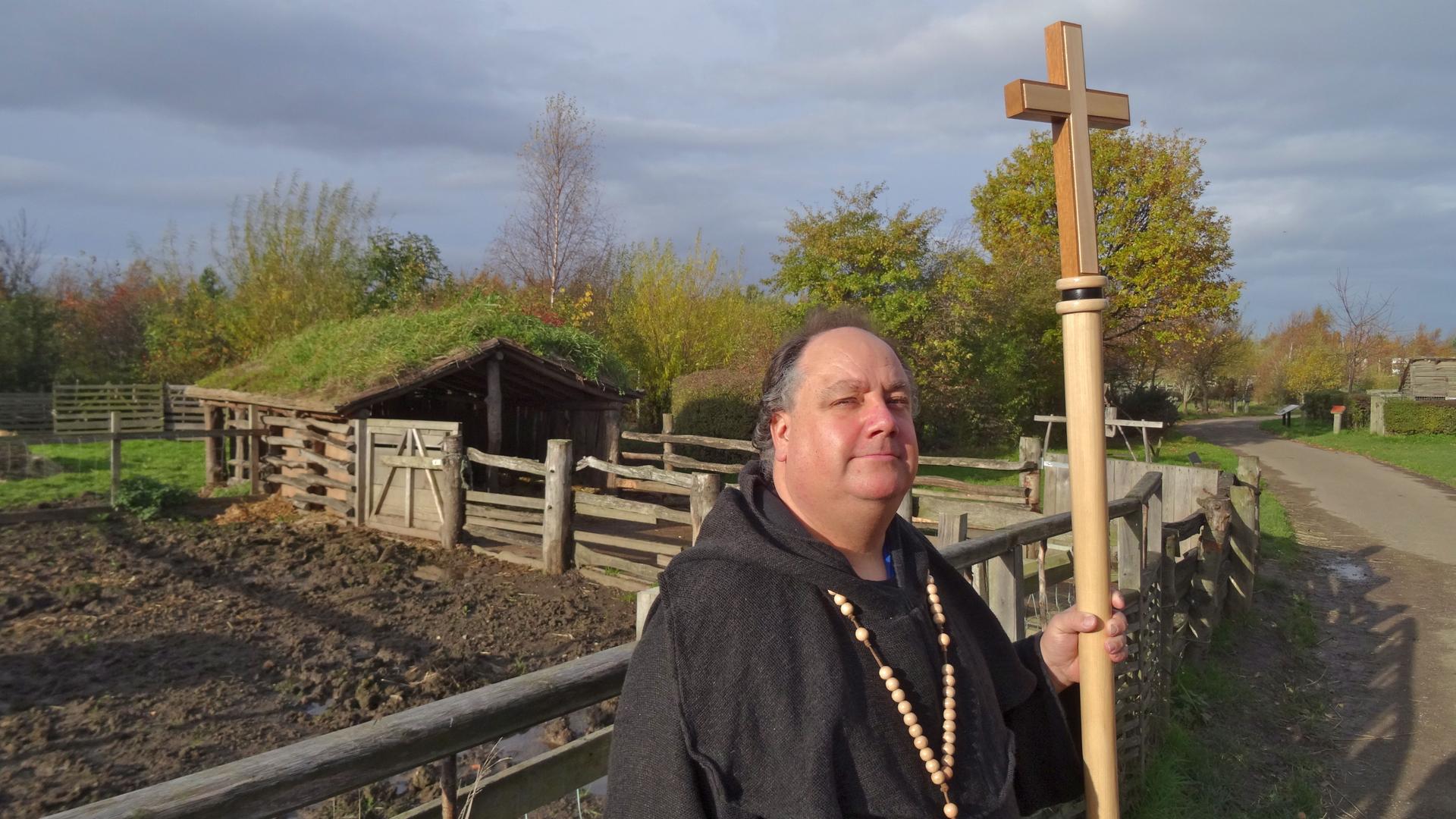From its beginnings to today, the English language has always been a hodgepodge
At Bede’s World in Jarrow, Britain, a staff member dressed as a monk poses in front of a re-creation of an Anglo-Saxon animal shelter.
Set among the call centers and storage facilities of Jarrow in the northeast of England is a farm, of sorts.
There are pigs, sheep and goats here. Some are ancient varieties, more popular 1,400 years ago than they are today. Like a shaggy-haired pig described my guide, John Sadler, as “half a ton of very grumpy animal … only interested if you feed it, or if you fall in — in which case you are food.”

Even with jets flying overhead and container ships unloading nearby, Bede’s World brings to life a time and place when the English language was in its infancy. The monk who Bede’s World is named after, the Venerable Bede, lived in the monastery next door in the late seventh and early eighth centuries.
“He’s famous as a writer and a teacher,” says Sadler, the living history coordinator at Bede’s World. “And he has this keen interest in history and language.”
Bede wrote an ecclesiastical history of the nation at the time.
“He’s the first person to actually write down who it was that actually came to the British Isles,” says linguist David Crystal, co-author with Hilary Crystal of Wordsmiths and Warriors. “He talks about the Angles and the Saxons and the Jutes, and discusses the range of languages that were spoken around the country.”
These languages arrived in Britain after the Romans had left. The newcomers found themselves in a place already heaving with languages — various Celtic tongues, as well as bits and pieces of languages left behind by Roman mercenaries who came from all over the empire.
Which explains why English, from its very beginnings, has been a mongrel tongue — a Frisian word here, a Latin one there, and so on. Pure English? It never existed.
These waves of migrants also helped form the dialects that you can still hear in Britain. On average, you can hear a different dialect every 25 miles you travel.

Crystal says it all goes back to those original days when people from one part of northern Europe settled in one part of England, and people from another part of northern Europe settled nearby.
“You only have to settle on the other side of a river or a mountain range,” says Crystal. “Before you know it, within a few years you’re starting to speak in a slightly different way. After a hundred years, it’s very different.”
This is one of the reasons Bede’s writings are so valuable: they’ve helped linguists trace the origins of today’s dialects. Of course, that early migration didn’t stop. Vikings, Normans and, much later, Indians, Irish and Jamaicans have all left their stamp on Britain’s dialects.
Inside Bede’s church, there’s a small section that dates back to the seventh century. John Sadler shows me his favourite item there is the chair the Bede supposedly sat on.
“It’s actually impossible to say whether it’s original or…a copy,” says Sadler with a shrug.
If it’s a copy, so be it. The monk who may — or may not — have sat on it was documenting a language that itself copied, and liberally borrowed and stole, from many other languages.
The World is an independent newsroom. We’re not funded by billionaires; instead, we rely on readers and listeners like you. As a listener, you’re a crucial part of our team and our global community. Your support is vital to running our nonprofit newsroom, and we can’t do this work without you. Will you support The World with a gift today? Donations made between now and Dec. 31 will be matched 1:1. Thanks for investing in our work!
